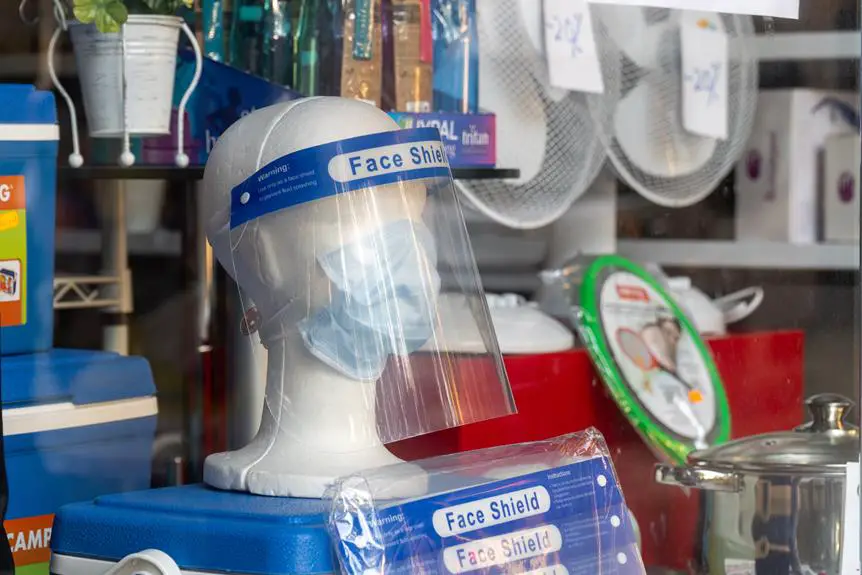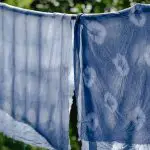Do you know that industrial weed barriers can increase the lifespan of fabrics by up to 50%?
Understanding the importance of industrial weed barriers for fabric protection is crucial for maintaining the integrity and durability of your materials. From preventing weed growth to minimizing soil erosion, these barriers play a vital role in preserving the quality of your fabrics.
In this guide, we will explore the various types of industrial weed barriers, their benefits for fabric protection, environmental considerations, and practical tips for choosing and installing the right barrier for your needs.
By the end, you'll have a comprehensive understanding of why industrial weed barriers are essential for safeguarding your fabrics.
Key Takeaways
- Industrial weed barriers prevent weed growth and protect fabrics.
- They enhance fabric durability and reduce the need for frequent maintenance.
- Weed barriers provide UV protection, preventing fabric fading and degradation.
- Industrial weed barriers minimize the need for frequent cleaning and repairs.
The Role of Industrial Weed Barriers
You need industrial weed barriers to prevent weed growth and protect your fabric. The role of industrial weed barriers is crucial in maintaining the integrity of your fabric. These barriers effectively block the growth of weeds, which can otherwise cause damage to the fabric over time. By creating a barrier between the soil and the fabric, these weed barriers play a vital role in preserving the quality and longevity of your fabric.
The effectiveness of industrial weed barriers in preventing weed growth is unparalleled. They provide a physical barrier that inhibits the growth of weeds, thus reducing the need for chemical weed killers that can have detrimental environmental impacts. Additionally, these barriers promote better water conservation by reducing the evaporation of moisture from the soil, benefiting the environment and your fabric.
The benefits of using industrial weed barriers extend beyond fabric protection. They contribute to maintaining a cleaner and more aesthetically pleasing environment by preventing weed overgrowth. Moreover, by reducing the need for chemical weed control, they also minimize the potential harm to the surrounding ecosystem, making them an environmentally friendly choice for fabric protection.
Types of Industrial Weed Barriers
When it comes to industrial weed barriers, there are various material options available for fabric protection. Understanding the application and benefits of each type is crucial in making the right choice for your specific needs.
Let's explore the different types of industrial weed barriers and how they can effectively safeguard your fabric.
Material Options for Barriers
Industrial weed barriers come in various material options, each designed to provide effective fabric protection. When choosing the right barrier material for your specific needs, it's important to consider the advantages, disadvantages, and installation tips for each option. Below is a comparison table of different material options for industrial weed barriers:
| Material | Advantages | Disadvantages |
|---|---|---|
| Plastic | Durable, lightweight, easy to install | May degrade in sunlight, not eco-friendly |
| Landscape Fabric | Allows water and air to pass through | Can be punctured easily, may degrade over time |
| Woven Polypropylene | Sturdy, tear-resistant, good UV protection | Heavier and more difficult to install |
Consider these factors when selecting the most suitable material for your fabric protection needs.
Application and Benefits
Consider the specific application and benefits of various types of weed barriers to determine the most suitable option for your fabric protection needs.
Industrial weed barriers offer a range of benefits, from preventing weed growth to controlling soil erosion.
Non-woven fabric barriers are effective for controlling weeds while allowing air and water to pass through, making them suitable for landscaping and gardening.
Woven fabric barriers, on the other hand, are more durable and ideal for long-term use in areas with heavy foot traffic.
Plastic sheeting barriers provide excellent moisture and temperature control, making them suitable for greenhouse applications.
Additionally, biodegradable fabric barriers offer an environmentally friendly option for temporary applications.
Understanding the specific benefits and applications of each type of industrial weed barrier is crucial in selecting the most effective fabric protection techniques for your unique needs.
Benefits of Weed Barriers for Fabrics
You'll be glad to know that using industrial weed barriers for fabrics can bring several benefits.
These barriers prevent weed growth, which helps maintain the aesthetics and cleanliness of the fabric.
Additionally, they enhance fabric durability and reduce the need for frequent maintenance, saving you time and effort.
Prevents Weed Growth
How effectively do weed barriers prevent unwanted weed growth and protect fabrics in industrial settings?
Weed barriers are highly effective in controlling weed growth, providing a physical barrier that prevents weeds from taking root and competing with plants for nutrients. This not only reduces the need for chemical weed control but also helps to maintain the integrity of the fabric by preventing damage from invasive weed roots.
By inhibiting weed growth, the barriers contribute to fabric preservation, ensuring that the fabric remains free from the potential harm caused by aggressive weed intrusion.
The use of weed barriers in industrial settings is a proactive approach that safeguards the fabric, allowing it to fulfill its intended purpose without the interference of unwanted vegetation.
Enhances Fabric Durability
Weed barriers enhance fabric durability by providing a protective layer that prevents wear and tear from environmental factors. This improvement in longevity and fabric preservation is essential for maintaining the quality and appearance of fabrics in industrial settings.
Here's how weed barriers achieve this:
- UV Protection: Weed barriers shield fabrics from harmful UV rays, which can cause fading and degradation over time.
- Prevents Abrasion: By creating a barrier between the fabric and the ground, weed barriers reduce the risk of abrasion and damage caused by friction.
- Moisture Control: They help to control moisture levels, preventing mold and mildew growth that can weaken fabrics.
- Resistance to Chemicals: Weed barriers offer protection against exposure to chemicals and harsh substances, preserving the fabric's integrity.
With these benefits, weed barriers play a crucial role in enhancing fabric durability in industrial environments.
Reduces Maintenance Efforts
When using industrial weed barriers for fabric protection, you can significantly reduce maintenance efforts by minimizing the need for frequent cleaning and repairs. This reduction in labor and upkeep makes weed barriers a cost-effective solution for fabric protection.
By preventing weed growth and minimizing soil and moisture contact with the fabric, the need for labor-intensive maintenance such as weeding, cleaning, and repairs is greatly reduced. This not only saves time and effort but also cuts down on maintenance costs in the long run.
Additionally, the fabric is better preserved, as it's subjected to less wear and tear. With industrial weed barriers, you can enjoy the peace of mind that comes with knowing your fabric is well-protected, while also reducing the time and resources required for its maintenance.
Applications in Fabric Protection
You can effectively protect fabric by using industrial weed barriers in various applications for durability and longevity. Here are some key applications in fabric protection:
- Agricultural Use: Industrial weed barriers are commonly used in agricultural settings to protect fabrics such as greenhouse covers, shade cloth, and ground cover fabrics. These barriers help prevent weed growth, reduce soil erosion, and protect fabrics from damage caused by direct contact with the ground.
- Landscaping: In landscaping applications, industrial weed barriers are used to protect landscape fabrics from weed growth, moisture, and physical damage. This helps prolong the life of landscape fabrics used for weed control, moisture retention, and erosion prevention.
- Construction: Fabric protection is essential in construction settings, where industrial weed barriers are used to protect geotextiles, erosion control fabrics, and silt fences. These barriers safeguard fabrics from damage caused by harsh environmental conditions, soil movement, and potential punctures from debris.
- Outdoor Furniture and Upholstery: Industrial weed barriers can be used to protect outdoor furniture cushions, upholstery fabrics, and awnings from moisture, mold, and UV damage. This application helps extend the lifespan of outdoor fabric items and reduces the need for frequent replacements.
Environmental Impact of Weed Barriers
An analysis of the environmental impact of industrial weed barriers reveals their significant role in minimizing fabric damage and reducing the need for frequent replacements. When considering the sustainability of fabric protection methods, weed barriers stand out for their ability to reduce the environmental impact.
By effectively preventing weed growth, these barriers minimize the need for chemical herbicides, which can have harmful effects on soil and water systems. This contributes to a more sustainable approach to fabric protection, aligning with environmentally conscious practices.
Weed barriers also offer an environmentally friendly alternative to other fabric protection methods that may involve more resources and have a greater impact on the environment. For instance, without a weed barrier, maintaining a weed-free area may require more frequent manual weeding or the use of heavy machinery, both of which can be more taxing on the environment.
The longevity and effectiveness of industrial weed barriers contribute to a reduction in overall environmental impact, making them a favorable choice for fabric protection from both a practical and ecological standpoint.
Choosing the Right Weed Barrier
To effectively choose the right weed barrier for your fabric protection needs, carefully consider the specific requirements and frequency of weed control in your area. When evaluating weed barriers, it's important to assess their effectiveness and installation process to ensure they align with your specific needs.
Here are some key factors to consider:
- Weed Barrier Effectiveness: Determine the level of weed control required in your area. If you're dealing with aggressive weed growth, opt for heavy-duty barriers that offer superior suppression. Alternatively, for areas with minimal weed growth, a lighter barrier may suffice, reducing unnecessary costs and effort.
- Weed Barrier Installation: Consider the ease of installation. Some weed barriers require professional installation, while others can be easily installed by homeowners. Choosing a barrier that aligns with your installation capabilities can save time and resources.
- Durability and Longevity: Assess the durability of the weed barrier. Opt for materials that are resistant to tearing, UV degradation, and environmental wear and tear to ensure long-term effectiveness.
- Permeability: Consider the permeability of the weed barrier to allow for proper water and air circulation, promoting healthy soil while preventing weed growth.
Carefully considering these factors will help you select the most suitable weed barrier for your fabric protection needs.
Installation and Maintenance Considerations
Consider the installation and maintenance of industrial weed barriers as crucial aspects for ensuring long-term fabric protection.
When it comes to installation, there are some challenges to be aware of. Ensuring proper ground preparation is essential to prevent potential issues such as uneven settling, which can compromise the barrier's effectiveness over time. Additionally, securing the barrier properly and ensuring that it's laid flat without any wrinkles or gaps is vital for its long-term effectiveness.
Proper maintenance is equally important. Regularly inspect the barrier for any signs of damage or wear, and promptly repair or replace any damaged sections to maintain its integrity. Keep the barrier free from debris and organic matter, as these can degrade the material and provide opportunities for weed growth.
By addressing installation challenges and consistently maintaining the barrier, you can maximize its longevity and effectiveness in protecting your fabric.
These efforts will contribute to the overall success of your fabric protection strategy, ensuring that your investment continues to deliver the desired results over time.
Case Studies: Weed Barriers in Action
Once you understand how industrial weed barriers have been used in real-world scenarios, you can appreciate their practical effectiveness in fabric protection. Case studies provide real-life examples of how industrial weed barriers have successfully protected fabrics from weed infiltration and damage. Here are some compelling case studies showcasing the effectiveness of weed barriers in action:
- Agricultural Applications: In a study conducted on a large farm, industrial weed barriers were used to protect crops from invasive weeds. The barriers effectively prevented weed growth, resulting in higher crop yields and reduced maintenance costs.
- Landscaping Projects: A landscaping company implemented industrial weed barriers in various projects to protect landscape fabrics from weed encroachment. This led to a significant reduction in the need for manual weeding and prolonged the lifespan of the landscape fabrics.
- Infrastructure Maintenance: Municipalities utilized industrial weed barriers to protect geotextile fabrics used in road construction and maintenance. The barriers minimized weed growth, preserving the integrity of the fabrics and reducing the frequency of repairs.
- Commercial Nurseries: Industrial weed barriers were employed in commercial nurseries to safeguard nursery fabrics from weed infestation. The barriers proved to be highly effective in maintaining the quality of the nursery fabrics and optimizing plant growth.
These case studies demonstrate the tangible benefits and real-world effectiveness of industrial weed barriers in protecting various types of fabrics.
Frequently Asked Questions
Can Industrial Weed Barriers Be Used for Protecting Outdoor Furniture From UV Damage?
Yes, industrial weed barriers can be used to protect outdoor furniture from UV damage. They provide a durable and effective layer of protection, preventing UV rays from causing fabric deterioration and extending the furniture's lifespan.
What Are the Potential Drawbacks of Using Industrial Weed Barriers for Fabric Protection?
Using industrial weed barriers for fabric protection may have drawbacks. They require maintenance, cost investment, and can have environmental impact. Consider these factors when deciding if they are the right choice for you.
Are There Any Special Considerations for Using Industrial Weed Barriers in Areas With Heavy Rainfall or Extreme Temperatures?
In areas with heavy rainfall, consider using industrial weed barriers with good drainage to prevent water buildup. Extreme temperatures can affect barrier material, so choose durable options that can withstand the climate fluctuations for fabric protection.
How Do Industrial Weed Barriers Compare to Other Methods of Fabric Protection, Such as Coatings or Sealants?
In comparing coating versus barrier, industrial weed barriers offer long-term durability by physically blocking weeds and moisture, while coatings or sealants may deteriorate over time. This distinction makes industrial weed barriers essential for fabric protection.
Can Industrial Weed Barriers Be Used in Conjunction With Other Protective Measures, Such as Anti-Mildew Treatments or Waterproofing Agents?
Yes, you can use industrial weed barriers with other protective measures like anti-mildew treatments and waterproofing agents. This combination enhances fabric protection by preventing weed growth, mold, and water damage effectively.
- What Is Pochampally Ikat? a Journey to India’s Silk City - June 27, 2025
- What Is Pochampally Ikat? a Journey to India’s Silk City - June 27, 2025
- What Is Pochampally Ikat? a Journey to India’s Silk City - June 27, 2025







